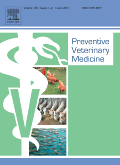
PREVENTIVE VETERINARY MEDICINE
Scope & Guideline
Advancing animal health through innovative prevention strategies.
Introduction
Aims and Scopes
- Epidemiological Studies:
Research that examines the distribution and determinants of health-related states or events in specific populations, often focusing on infectious diseases affecting livestock and companion animals. - Biosecurity Practices:
Studies aimed at assessing and improving biosecurity measures on farms to prevent disease outbreaks and ensure animal health. - Antimicrobial Resistance:
Research exploring the prevalence and factors associated with antimicrobial resistance in veterinary settings, including the implications for animal treatment and public health. - Decision Support Tools:
Development and evaluation of tools that assist veterinarians and farmers in making informed decisions regarding animal health management and disease prevention. - One Health Approach:
Interdisciplinary research that recognizes the interconnectedness of human, animal, and environmental health, often addressing zoonotic diseases. - Machine Learning and Data Analysis:
Utilization of advanced statistical and computational methods to analyze veterinary health data, aiming to predict disease outbreaks and improve management strategies. - Public Health Campaigns:
Assessment of initiatives designed to educate communities about animal health risks and promote preventive measures, such as vaccination and responsible pet ownership.
Trending and Emerging
- Integrated Disease Management Strategies:
There is a growing emphasis on holistic approaches that combine veterinary care, biosecurity, and management practices to enhance animal health and prevent disease. - Impact of Climate Change on Animal Health:
Research exploring how climate change affects animal health, disease distribution, and management practices is gaining traction, highlighting the need for adaptive strategies. - Use of Technology in Veterinary Medicine:
The incorporation of technology, such as telemedicine, wearable health monitoring devices, and data analytics, is increasingly prevalent in veterinary practices. - Community-Based Animal Health Approaches:
Emerging themes focus on involving local communities in animal health initiatives, promoting sustainable practices, and enhancing the capacity for disease prevention. - Zoonotic Disease Research:
Increased attention is being paid to zoonotic diseases, particularly in the context of global health security and the One Health paradigm, reflecting rising public health concerns.
Declining or Waning
- Traditional Animal Husbandry Practices:
Research centered on conventional farming methods is decreasing as the field shifts towards more innovative and sustainable practices, including precision agriculture and welfare-oriented systems. - Basic Virology and Pathology Studies:
There is a noticeable decrease in studies focusing solely on the basic aspects of virology and pathology without incorporating practical applications or interventions in veterinary medicine. - Generic Disease Surveillance Methods:
Generic approaches to disease surveillance are becoming less prominent as more specialized, data-driven, and context-specific surveillance strategies are being developed. - Historical Epidemiological Data Analysis:
Research relying heavily on historical data without new methodologies or technologies is waning in favor of real-time data analysis and predictive modeling. - Single-Species Focus Studies:
Research that examines diseases or health issues in isolation, without considering the broader ecological or epidemiological context, is declining as interdisciplinary approaches gain importance.
Similar Journals

REVUE SCIENTIFIQUE ET TECHNIQUE-OFFICE INTERNATIONAL DES EPIZOOTIES
Empowering Knowledge in Animal Science and MedicineREVUE SCIENTIFIQUE ET TECHNIQUE-OFFICE INTERNATIONAL DES EPIZOOTIES is a prestigious journal published by the OFFICE INTERNATIONAL DES EPIZOOTIES based in France, known globally for its commitment to advancing knowledge in the fields of Animal Science and Zoology as well as Medicine. With its ISSN 0253-1933 and E-ISSN 1608-0637, this journal has been a vital resource for researchers and practitioners since its establishment in 1990. Currently ranked in the Q3 quartile across both the Animal Science and Medicine categories in 2023, it reflects a growing impact in the veterinary community, holding commendable ranks in the veterinary general and miscellaneous categories. Although it does not offer open access options, its comprehensive articles are crucial for informing best practices, public health policies, and advancing research in veterinary medicine. With an emphasis on innovative approaches and evidence-based studies, the journal serves as a significant platform for networking and collaboration among scholars, professionals, and students dedicated to improving animal health and welfare worldwide.
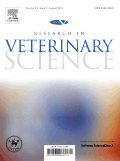
RESEARCH IN VETERINARY SCIENCE
Exploring the Frontiers of Animal Health ScienceRESEARCH IN VETERINARY SCIENCE, published by Elsevier Science Ltd, stands as an authoritative platform in the field of veterinary studies. With its origins dating back to 1965, this prestigious journal is recognized for its contribution to the advancement of veterinary knowledge and practices, boasting a remarkable Q1 categorization in Veterinary (miscellaneous) and ranking 24th out of 194 in the Scopus veterinary general category, placing it in the top 13% of its field. The journal presents a diverse range of research articles that explore critical topics in veterinary science, thereby facilitating evidence-based practices and innovations. Although currently not an open-access journal, it remains highly accessible through institutional and personal subscriptions, allowing researchers, professionals, and students to benefit from its rich collection of studies. As it moves toward 2024, RESEARCH IN VETERINARY SCIENCE continues to be a vital resource for those dedicated to improving animal health and advancing veterinary science.

Open Veterinary Journal
Championing Open Access for Veterinary AdvancementsOpen Veterinary Journal, published by the University of Tripoli, Faculty of Veterinary Medicine, offers a vital platform for the dissemination of research in the field of veterinary sciences. With an ISSN of 2226-4485 and an E-ISSN of 2218-6050, this journal has been committed to open access since 2011, allowing for unfettered access to its content, which ensures that researchers, practitioners, and students worldwide can benefit from the latest veterinary research findings. Operating from Libya, it has garnered an important position within the academic community, achieving a Q2 quartile ranking in the scope of veterinary (miscellaneous) and maintaining a Scopus rank of 104 out of 194 within the general veterinary category, indicating its growing influence and reach. The journal focuses on a diverse array of topics pertinent to contemporary veterinary practice, aiming to bridge gaps in knowledge and foster collaboration among scholars and practitioners. As it continues to publish original research and reviews, Open Veterinary Journal stands as a crucial resource for advancing veterinary medicine, supporting innovative research, and enhancing educational outcomes within the profession.
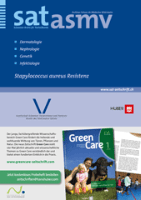
SCHWEIZER ARCHIV FUR TIERHEILKUNDE
Fostering excellence in animal welfare through scholarly exchange.SCHWEIZER ARCHIV FUR TIERHEILKUNDE is a prestigious journal published by the GESELLSCHAFT SCHWEIZER TIERARZTINNEN & TIERARZTE, dedicated to advancing the field of veterinary science. With the ISSN 0036-7281 and E-ISSN 1664-2848, this esteemed journal has been a vital source of knowledge since its inception in 1945, evolving through converged years up to 2024. It plays a significant role in the veterinary community, reflected by its 2023 ranking in the Q2 category for veterinary (miscellaneous) research, placing it within the 48th percentile among its peers. Although it does not currently offer Open Access options, the journal remains a trusted outlet for researchers, professionals, and students looking to stay abreast of the latest findings and practices in veterinary medicine. Published in Switzerland, it serves as a bridge for sharing innovative ideas and solutions in animal healthcare, emphasizing the importance of community and collaboration in improving animal welfare.

Acta Veterinaria Eurasia
Fostering collaboration in veterinary studies worldwide.Acta Veterinaria Eurasia is a prominent open access journal dedicated to advancing the field of veterinary sciences. Published by AVES since 2002, it aims to provide a platform for innovative research and insights that enhance veterinary practices and animal welfare. With its ISSN 2618-639X and E-ISSN 2619-905X, the journal has established a growing international reputation, particularly in Turkey, and is indexed in major databases. As of 2023, it is positioned in Q4 of the Veterinary (miscellaneous) category and holds a Scopus rank of #138 out of 194 in the general veterinary domain, placing it in the 29th percentile. The journal spans a broad scope within veterinary studies, inviting contributions that foster knowledge dissemination and collaboration among researchers, professionals, and students alike. By promoting open access since its inception, Acta Veterinaria Eurasia is committed to making cutting-edge research accessible to all, ultimately supporting improved health outcomes in veterinary practice.
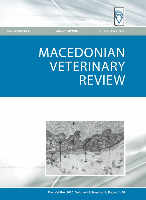
Macedonian Veterinary Review
Advancing veterinary science through open dialogue.Macedonian Veterinary Review is a prominent open access journal dedicated to advancing the field of veterinary science. Published by SCIENDO, this journal provides a crucial platform for researchers, professionals, and students to share their findings and insights related to veterinary practices, animal health, and welfare. Established with the aim of fostering knowledge exchange since its inception in 2010, the journal has made significant strides, evidenced by its 2023 Scopus ranking of #131 out of 194 in the General Veterinary category, placing it in the 32nd percentile among its peers. The journal's open access model enhances the dissemination of knowledge, ensuring that vital research reaches a wider audience, thereby addressing key issues in the veterinary landscape. With its base in Macedonia and a commitment to high-quality scholarly contributions, the Macedonian Veterinary Review is an essential resource for anyone involved in veterinary research and practice, reflecting the ongoing developments and challenges in this critical field.
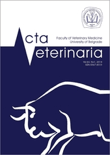
ACTA VETERINARIA-BEOGRAD
Connecting global insights in veterinary studies.ACTA VETERINARIA-BEOGRAD is a distinguished academic journal dedicated to the field of veterinary science, focusing on a broad spectrum of topics pertinent to veterinary medicine and animal health. Published by SCIENDO, this journal has been an open-access resource since 2014, facilitating the dissemination of valuable research findings and innovations to a global audience. With an ISSN of 0567-8315 and an E-ISSN of 1820-7448, it plays a critical role in promoting accessible knowledge in veterinary practices while contributing to the advancement of the field. Located in Poland, this journal notably ranks in the Q3 quartile for veterinary studies, reflecting its ongoing commitment to quality and relevance. The journal welcomes contributions from a diverse range of veterinary disciplines, making it a vital platform for researchers, practitioners, and students alike who aspire to advance their understanding and impact within the veterinary community.

Journal of Veterinary Science
Driving Excellence in Veterinary Research and Practice.Journal of Veterinary Science, published by the Korean Society of Veterinary Science, is a distinguished peer-reviewed Open Access journal that has been contributing to the field of veterinary medicine since its inception in 2000. With an E-ISSN of 1976-555X, this journal not only provides critical insights for researchers globally but also maintains a strong presence within the academic community, evidenced by its impressive ranking in the Scopus database, where it stands at 44 out of 194 in the general veterinary category, placing it in the 77th percentile. The journal’s impact factor reflects its rigorous standards and the significance of the research it publishes, all while offering unrestricted access to its content since 2006, which promotes the free exchange of knowledge. Situated in the vibrant academic atmosphere of Seoul, South Korea, the Journal of Veterinary Science aims to advance veterinary research and practice, covering a broad spectrum of topics to inspire students, professionals, and established researchers alike to push the boundaries of veterinary science.
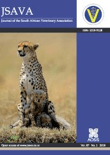
Journal of the South African Veterinary Association
Empowering Animal Health with Quality ResearchJournal of the South African Veterinary Association is a prominent Open Access journal dedicated to advancing the field of veterinary science since its inception in 1945. Published by MEDPHARM PUBLICATIONS PTY LTD, this journal stands out with an impactful HIndex and a commendable categorization in 2023, ranking Q3 in Medicine (miscellaneous) and Q2 in Veterinary (miscellaneous). With a Scopus rank of 96 out of 194 in the veterinary field, it serves as an essential resource for researchers, veterinary professionals, and students, promoting the dissemination of high-quality research and knowledge. The journal offers a platform for peer-reviewed articles covering diverse topics relevant to veterinary and animal health issues, encouraging expansive dialogue and collaboration within the academic community. Based in Centurion, South Africa, and accessible globally since it adopted an Open Access model in 1997, the journal exemplifies a commitment to accessibility and the sharing of knowledge.

Iranian Journal of Veterinary Research
Cultivating a Vibrant Community of Veterinary ScholarsWelcome to the Iranian Journal of Veterinary Research (IJVR), a prestigious platform dedicated to advancing the field of veterinary science. Published by Shiraz University, this journal plays a pivotal role in disseminating high-quality research findings amid a vibrant academic community. With its ISSN 1728-1997, and a convergence of studies from 2008 to 2024, IJVR serves as an essential resource for veterinarians, researchers, and students interested in Animal Science and Zoology. Recognized in the Q3 quartile for both Animal Science and Veterinary categories, it holds a respectable position with Scopus rankings placing it in the 54th percentile among general veterinary journals. Although it currently lacks an open access model, the journal ensures that cutting-edge veterinary research is presented with rigor and relevance, fostering knowledge that contributes to animal health and welfare. With its strategic focus on innovative methodologies, clinical practices, and the biological sciences, the IJVR is set to become your go-to source for critical advancements in veterinary research.